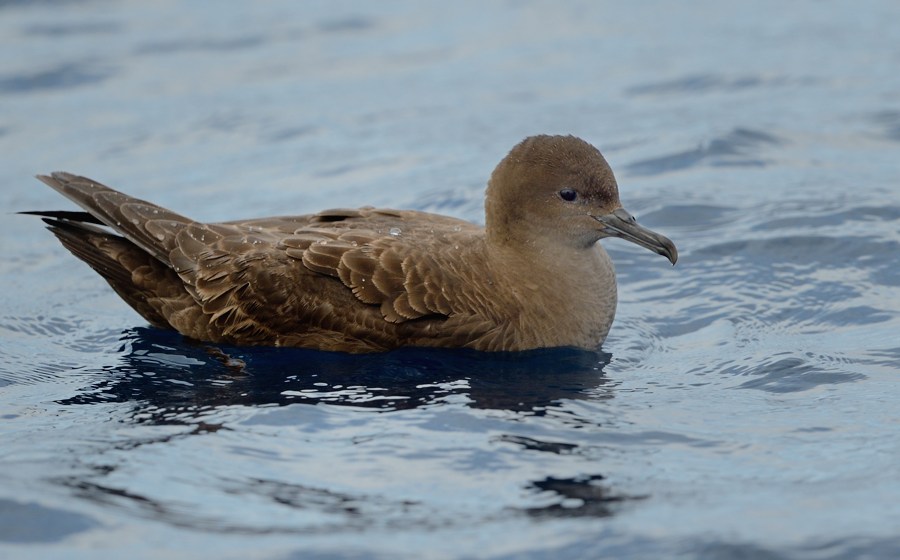 Breeding colonies of White-chinned Petrel (open circles) in the south Atlantic, Indian and Pacific Oceans. Colonies where samples were collected are indicated by a star (from the publication)
Breeding colonies of White-chinned Petrel (open circles) in the south Atlantic, Indian and Pacific Oceans. Colonies where samples were collected are indicated by a star (from the publication)
Viviane Barquete (FitzPatrick Institute of African Ornithology, University of Cape Town, Rondebosch, South Africa) and colleagues have published open access in the journal Aquatic Conservation: Marine and Freshwater Ecosystems on the origins of White-chinned Petrel Procellaria aequinoctialis killed by longline fisheries.
The paper’s abstract follows:
“Incidental capture (bycatch) of seabirds in longline and trawl fisheries is one of the main threats to many albatrosses and large petrels. The White-chinned Petrel (Procellaria aequinoctialis) has a circumpolar distribution and is the seabird species killed most frequently by fisheries in the Southern Ocean. In an attempt to identify provenance, stable isotope values (δ13 C and δ15 N) in feathers from White-chinned Petrels killed in longline fisheries off Brazil, South Africa and New Zealand were compared with those from petrels breeding at five major colonies (South Georgia, Prince Edward, Crozet, Kerguelen and Antipodes Islands). Feather δ15 N, and to a lesser extent, δ13 C values in feathers differed among breeding birds sampled at South Georgia, Antipodes Islands and the three Indian Ocean colonies. Given that adult feathers are moulted primarily in temperate waters, away from heir colonies, this confirms that most adults from these three regions winter in different areas. Discriminant function analysis of stable isotope values indicated that most petrels killed off Brazil and South Africa were from Atlantic and Indian Ocean populations, respectively. Birds killed in New Zealand fisheries in summer were assigned to populations from all three oceans, with few assigned to the Antipodes; however, we lacked stable isotope data from the Auckland Islands, which is the most likely source population. Identifying the origin of bycaught birds is essential for determining which populations are affected by human activities and for prioritising conservation efforts. This includes targeting of mitigation regulations, monitoring of compliance and bycatch rates, and ensuring cooperation between breeding and non-breeding range states to ensure best practices are adopted in national fisheries and in the high seas.”
With thanks to Sandy Bartle.
Reference:
Barquete, V., Cherel, Y. Phillips, R.A., Thompson, D., Chilvers, B.L., Wanless, R.M. & Ryan, P.G. 2025. Using stable isotopes to assign origin of White-Chinned Petrels killed by longline fisheries. Aquatic Conservation: Marine and Freshwater Ecosystems doi.org/10.1002/aqc.70182.
John Cooper, Emeritus Information Officer, Agreement on the Conservation of Albatrosses and Petrels, 17 July 2025

 English
English  Français
Français  Español
Español  Recording a Laysan Albatross chick, UN World Restoration Flagship Comprehensive Island Restoration in Mexico, photograph by Todd Brown
Recording a Laysan Albatross chick, UN World Restoration Flagship Comprehensive Island Restoration in Mexico, photograph by Todd Brown A bird-scaring line in action, photograph by Domingo Jimenez
A bird-scaring line in action, photograph by Domingo Jimenez

 Short-tailed Shearwater off North Cape,New Zealand, photograph by Kirk Zufelt
Short-tailed Shearwater off North Cape,New Zealand, photograph by Kirk Zufelt